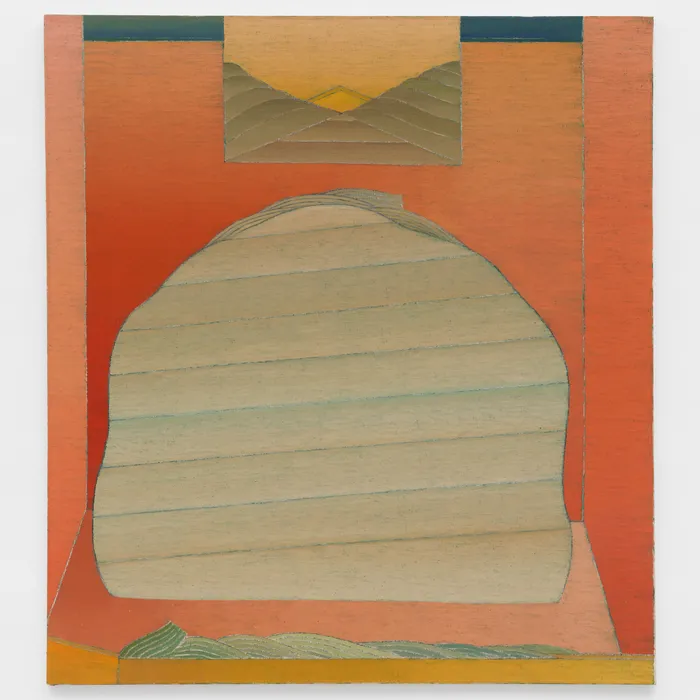
Henri Matisse’s The Red Studio is among the most gorgeous lodestars in all of modernism. Completed in 1911, it depicts the inner sanctum of his studio in the Paris suburbs. It is a miracle in red, a coral-colored planet, its flat, near-monochrome treatment now a mainstay of contemporary art. In this enclosed garden, we see decorative ceramics, drawing tools, a leafy nasturtium, an empty wine glass, vases, and a grandfather clock with no hands because, of course, time ceases to exist when artists are in creative flow. Red Studio reminds us that a studio is at once laboratory, shelter from the storm, personal cathedral, and star nursery where brilliant things are formed by unknown forces and internal pressures.
The studio is filled with paintings stacked in rows and haphazardly hung. Art lovers will spy a handful of masterpieces on the walls. If this painting were turned into a small museum, it would be one of the best there is of early modernism. This is what MoMA has attempted to pull off in a ravishingly compact show that showcases not only Matisse’s revelation in red but also six paintings depicted in Red Studio, three sculptures, and a wonderful ceramic plate. You look around at this art-historical reunion and a long-gone world becomes young again. It goes off inside you like a depth charge.
“Matisse: The Red Studio” does a lot in a little space and reminds us that blockbusters can come in small packages — in this case, two main galleries of art. (Although don’t miss the short video on the conservation of this painting. It is a lesson in curatorial care and discovery.) In this concise show, we can ponder things longer, linger, make connections, see how one work might grow out of another without feeling overwhelmed, swamped by numbers, and exhausted at the end. More institutions should consider this scale, the scale at which the work was made. We see how, in an incredibly condensed period of time, an artist can traverse universes and touch down in places unexpected. We witness an artist not only inventing and reinventing himself but reinventing art history as he does so. In these little spaces, you can almost hear these mighty engines roar.



